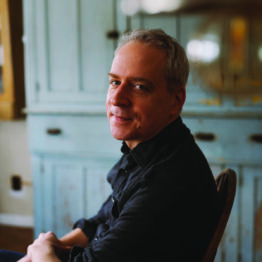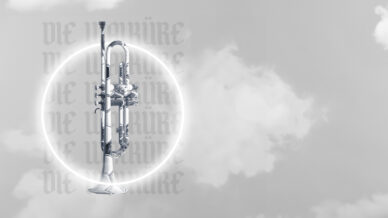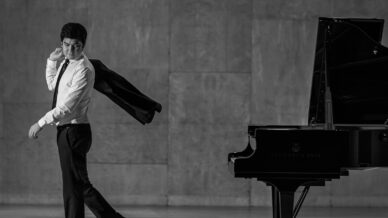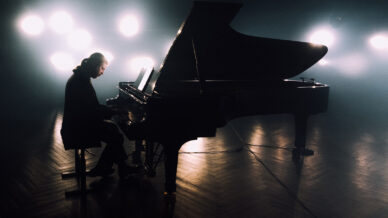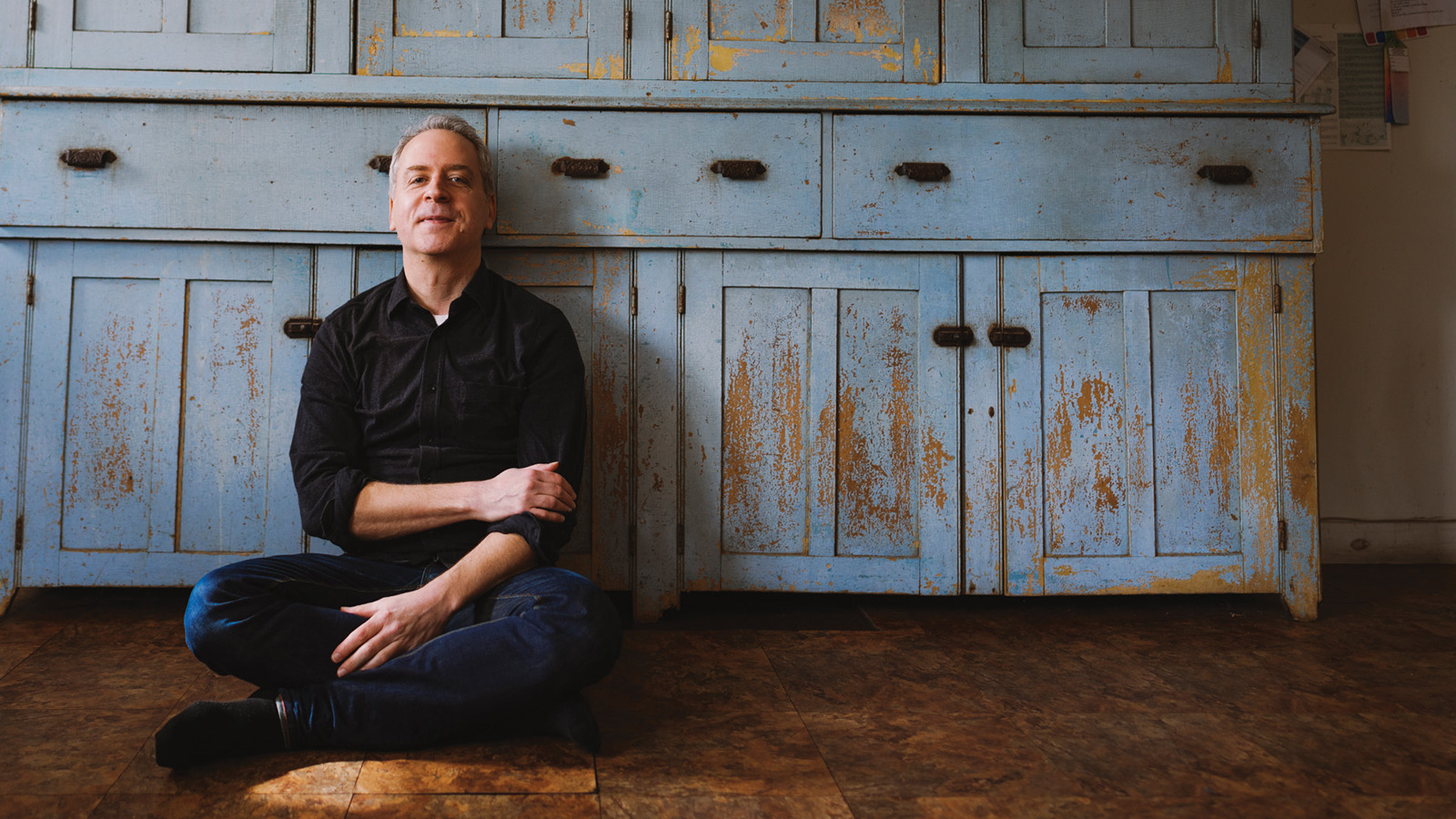

Mahler Symphony No. 5
March 28 – 30, 2024
FABIO LUISI conducts
JEREMY DENK piano
ANNA CLYNE ATLAS | World Premiere
MAHLER Symphony No. 5
For intense emotions and radiant beauty, nothing can surpass Mahler’s Fifth. A movement marked “tempestuously. With great vehemence” stands alongside the achingly beautiful Adagietto — a gift to his beloved wife Alma — scored for strings and harp alone, a kind of “resting place” before the grand drama of the finale. The legendary conductor Herbert von Karajan called the Symphony “a transformative experience.” Coupled with the world premiere of Anna Clyne’s visceral and arresting Piano Concerto, this concert will have the emotional depth and range of the DSO on full display.
PERFORMANCE PRELUDES
Join us for a special pre-concert talk with Assistant Conductor Maurice Cohn and Composer Anna Clyne! The talks will take place from Horchow Hall starting at 6:30pm on Thursday, Friday, and Saturday.

Program Notes
by René Spencer Saller
The London-born cellist and composer Anna Clyne takes an original approach when creating her acoustic and electro-acoustic music. Many of her works involve collaborations with visual artists, filmmakers and choreographers, as well as other musicians. Recently Bachtrack listed her as one of the top-10 most performed contemporary composers in the world, as well as the most performed living female British composer in both 2022 and 2023.
To commemorate Beethoven’s 250th anniversary in 2020, Clyne composed a trilogy of works inspired by his music. In addition to Stride, which the DSO performed in 2021, Clyne wrote Breathing Statues, a string quartet, and Shorthand for solo cello and string quintet, as well as a version for cello and string orchestra.
Other recent projects include the world premiere of Pam Tanowitz’s choreography to Breathing Statues for the Royal Ballet in London and performances of her composition DANCE by the San Francisco Ballet, with choreography by Nicolas Blanc. In the same spirit as ATLAS—a DSO commission that was inspired by a portfolio of Gerhard Richter images—her recent compositions Color Field and Abstractions respond to art by Mark Rothko and other contemporary nonrepresentational painters.
The Composer Speaks
Set in four movements, my first piano concerto is inspired by (and titled after) the monumental, four-volume publication ATLAS, which maps the ideas, processes and inspirations of the German artist Gerhard Richter. Conceived and closely edited by Richter himself, this comprehensive compendium cuts straight to the heart of the artist’s thinking, collecting more than 5,000 photographs, drawings and sketches that he has compiled or created since the moment of his creative breakthrough in 1962. My music responds to the imagery contained in these four volumes to create a musical montage and a lucid narrative. Examples of imagery are listed below. Thank you to my friend and pianist Alex Peh for his time and guidance while I wrote ATLAS.
VOLUME I (1962–1974)
Photographic Experiments 1969
Stars 1968
Spheres 1968
Fire 1968
Photographic Details of Colour Samples 1970
Cities (in Sketches of a Room) 1968
Clouds (in Sketches of a Room) 1970
VOLUME II (1966–1988)
Sketches (Constellations) 1967
Sketches (Numbers) 1978
Sketches (Colour Charts) 1966
Colour Fields 1973
Still Lifes (Skull) 1983
Abstract Pictures 1977
Still Lifes (Apples and Bottle) 1984–88)
VOLUME III (1978–2006)
Various Motifs 1978/84/88
Cathedral Corner 1984/88
Sketches (Connecting Piece) 1989
Sketches (Frames) 1990
The Black Forest 1991
Railway Embankment 1990-94
Houses in the Snow (Sils-Maria) 2004
VOLUME IV (2002–2013)
Tree Trunks 2002
Beach and Tideland 2002
Sun 2002
Glass Planes 2006
Various Structures and Silicate 2006
Structure “Pearls” 2006
Strip Studies 2010
—Anna Clyne
In early 1901, the year Mahler began his Symphony No. 5 in C-sharp minor, he began to bleed internally and nearly died. After undergoing two operations, he spent several weeks in hospice at a sanitarium. This crisis and eventual recovery deeply affected his emotional state, causing him to contemplate human mortality to an almost obsessive degree. His music from this period, the last decade of his too-short life, reflects these morbid preoccupations while also gesturing toward transcendence.
New Beginnings
Mahler wrote his Symphony No. 5 in 1901 and 1902, mostly during summers at his lakeside country home. It was a pivotal time for the 40-year-old Austrian, who was beginning to attract notice as a composer while also serving as director of the Vienna Court Opera and principal conductor of the Vienna Philharmonic. In November 1901, he met the 22-year-old beauty Alma Schindler, herself a budding composer; four months later, they married. The bride was already pregnant with their first child.
The Fifth Symphony marks a turning point in Mahler’s career, the beginning of his fruitful middle period. Deeply Romantic in its emotional scope, it casts off the programmatic trappings of its predecessors and offers richer orchestral colors and denser counterpoint, as well as a greater emphasis on thematic unity among its five movements. Sprawling and complex, with no clear home key, the Fifth takes more than an hour to perform in its entirety. Some scholars call it the last of his song-based symphonies; others insist that it represents a turn toward absolute music. Either way, the significance of the Fifth as a transitional point in his growth as a symphonist is undisputed.
Death and Deliverance
The symphony begins with a lonely trumpet call: a quotation from the climax of the Fourth Symphony’s first movement. The somewhat lugubrious march that dominates the first movement is tinged with dark passions and funereal bombast, evoking at times the harrowing opening song in Mahler’s Kindertotenlieder cycle, which he was also working on at the time. For years after the Fifth’s premiere, Mahler labored over the first movement’s orchestration, and in 1911, the last year of his life, he complained, “I cannot understand how I could have written so much like a beginner.” His usual compositional routine, he continued, “had deserted me altogether, as though a totally new message demanded a new technique.”
The second movement, a stormy and sometimes violent interlude, further amplifies the angst. Phillip Huscher deftly describes “one jarring moment, so characteristic of Mahler, when all the grief and anger spills over into sheer giddiness – a momentary indiscretion, like laughter at the graveside.”
In a letter to Alma written after the first rehearsal, Mahler referred to the scherzo as “the very devil of a movement” and complained that musicians and audiences would struggle with “this chaos of which new worlds are forever being engendered.” At moments the music seems positively schizophrenic, as peppy pizzicato strings join gloomy brass and tenacious trumpets collide with tinkling percussion. Mahler compared this movement to “a human being in the full light of day, in the prime of his life.”
The scherzo clears the way for the subsequent “Adagietto,” which arguably contains the most beloved tune in Mahler’s hefty catalogue. Although it works best as an introduction to the finale, the slow movement has always been popular as an independent orchestral piece.
The rondo-style finale begins with a single note from the horn, a kind of musical alarm clock. Like the other movements, the finale is dense and contrapuntal, but the tone is lighter and livelier—giocoso, or “playful and humorous.” Following the classic aspera ad astra trajectory (“from hardship to the stars”), the last movement delivers us to radiant D major with a triumphant brass chorale. For the ending Mahler used the direction Frisch, or “fresh,” to convey a sense of newness and possibility. Although the chorale revisits material from the second movement, the recontextualized theme now seems to represent pure celebration, a promise fulfilled.

